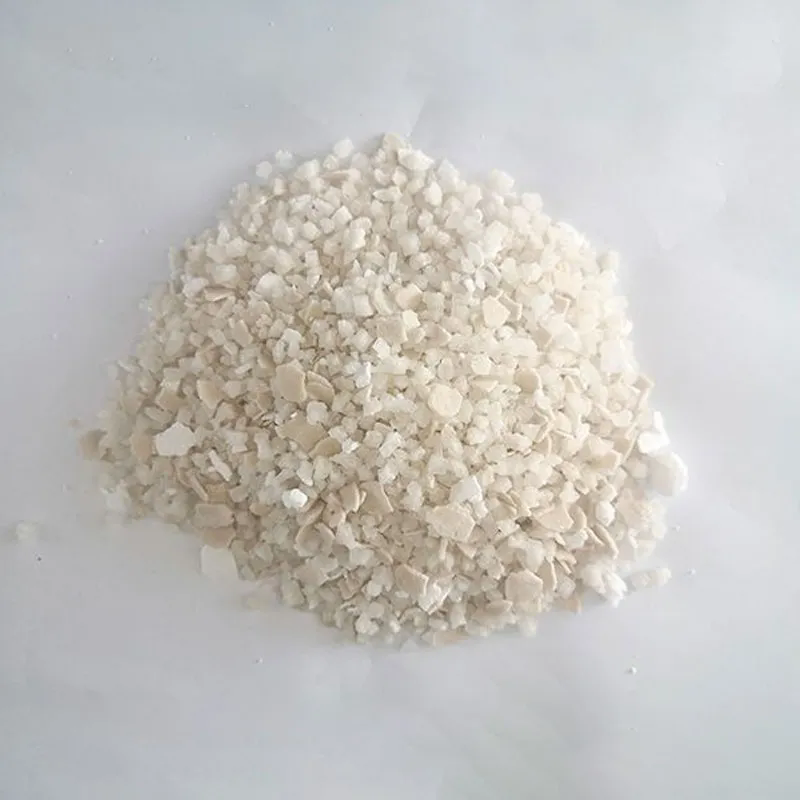Key Types of Snow Melting Agents
2024-08-02
A snow melting agent is a substance used to accelerate the melting of snow and ice, commonly used for maintaining safety and accessibility on roads, driveways, sidewalks, and other surfaces during winter conditions. These agents are essential for preventing accidents and facilitating safe travel and mobility in snowy and icy environments.
Key Types of Snow Melting Agents
1. Salt-Based Melting Agents
- Rock Salt (Sodium Chloride): The most commonly used snow melting agent. It lowers the freezing point of water, causing ice and snow to melt. It is relatively inexpensive but can be corrosive to metal and harmful to vegetation.
- Calcium Chloride: More effective than rock salt at lower temperatures and can work down to around -25°F (-32°C). It is also less corrosive and more efficient at melting snow and ice quickly.
- Magnesium Chloride: Similar to calcium chloride, it works at lower temperatures and is less harmful to concrete and vegetation. It is also less corrosive compared to rock salt.
2. Organic and Alternative Melting Agents
- Beet Juice and Cheese Brine: Used in combination with traditional salts to reduce their environmental impact. These alternatives can enhance the effectiveness of salt and reduce its corrosive properties.
- Potassium Acetate: A less corrosive and more environmentally friendly option compared to traditional salts. It is effective at low temperatures and is commonly used in airport de-icing.
3. Non-Chemical Melting Agents
- Sand and Grit: Used to provide traction on ice and snow rather than melting it. While it doesn’t actually melt snow, it improves safety by reducing slipperiness.
- Urea: Often used in fertilizers, urea can also be used as a snow melting agent. It is less corrosive but generally less effective in extreme cold temperatures compared to salts.
Advantages
1. Effective Melting
- Lowers Freezing Point: Snow melting agents reduce the freezing point of water, causing snow and ice to melt more quickly.
- Improves Safety: Helps prevent slips and falls and facilitates safe travel by clearing ice and snow from surfaces.
2. Versatility
- Wide Applications: Can be used on various surfaces including roads, sidewalks, driveways, and parking lots.
- Varied Options: Offers choices for different temperature ranges and environmental considerations.
3. Cost-Effective
- Economical Solutions: Salt-based agents are generally inexpensive and widely available, making them cost-effective for large-scale applications.
Disadvantages
1. Environmental Impact
- Corrosive Effects: Some agents, particularly rock salt, can be corrosive to metals, concrete, and asphalt, leading to damage over time.
- Vegetation Damage: Can harm plants and soil if used in large quantities or not properly managed.
2. Effectiveness in Extreme Cold
- Temperature Limits: Some melting agents, like rock salt, lose effectiveness at very low temperatures and may require more aggressive alternatives like calcium chloride or magnesium chloride.
3. Health and Safety Concerns
- Potential for Harm: Some chemicals can be harmful to pets or children if ingested, and proper handling and application are necessary to mitigate risks.
Applications
1. Road Maintenance
- Highways and Roads: Used by municipalities and transportation departments to keep roadways clear of ice and snow and ensure safe driving conditions.
2. Residential Use
- Driveways and Sidewalks: Applied by homeowners to maintain accessibility and safety on private properties.
3. Commercial Use
- Parking Lots and Walkways: Used by businesses and property managers to keep commercial areas safe and accessible during winter weather.
Considerations
1. Temperature Range
- Select the Appropriate Agent: Choose a melting agent based on the expected temperature range and the effectiveness needed for the specific conditions.
2. Environmental and Structural Impact
- Minimize Corrosion: Use agents that are less corrosive or combine them with other materials to reduce damage to surfaces and vegetation.
- Eco-Friendly Options: Consider alternative agents with less environmental impact if needed.
3. Application Techniques
- Proper Use: Follow recommended application rates and methods to ensure effectiveness and minimize potential negative impacts.
Summary
Snow melting agents play a crucial role in managing winter weather conditions by accelerating the melting of snow and ice, improving safety, and maintaining accessibility on various surfaces. By choosing the right type of melting agent and considering factors such as temperature, environmental impact, and application techniques, users can effectively manage winter weather challenges and enhance safety in snowy and icy conditions.



